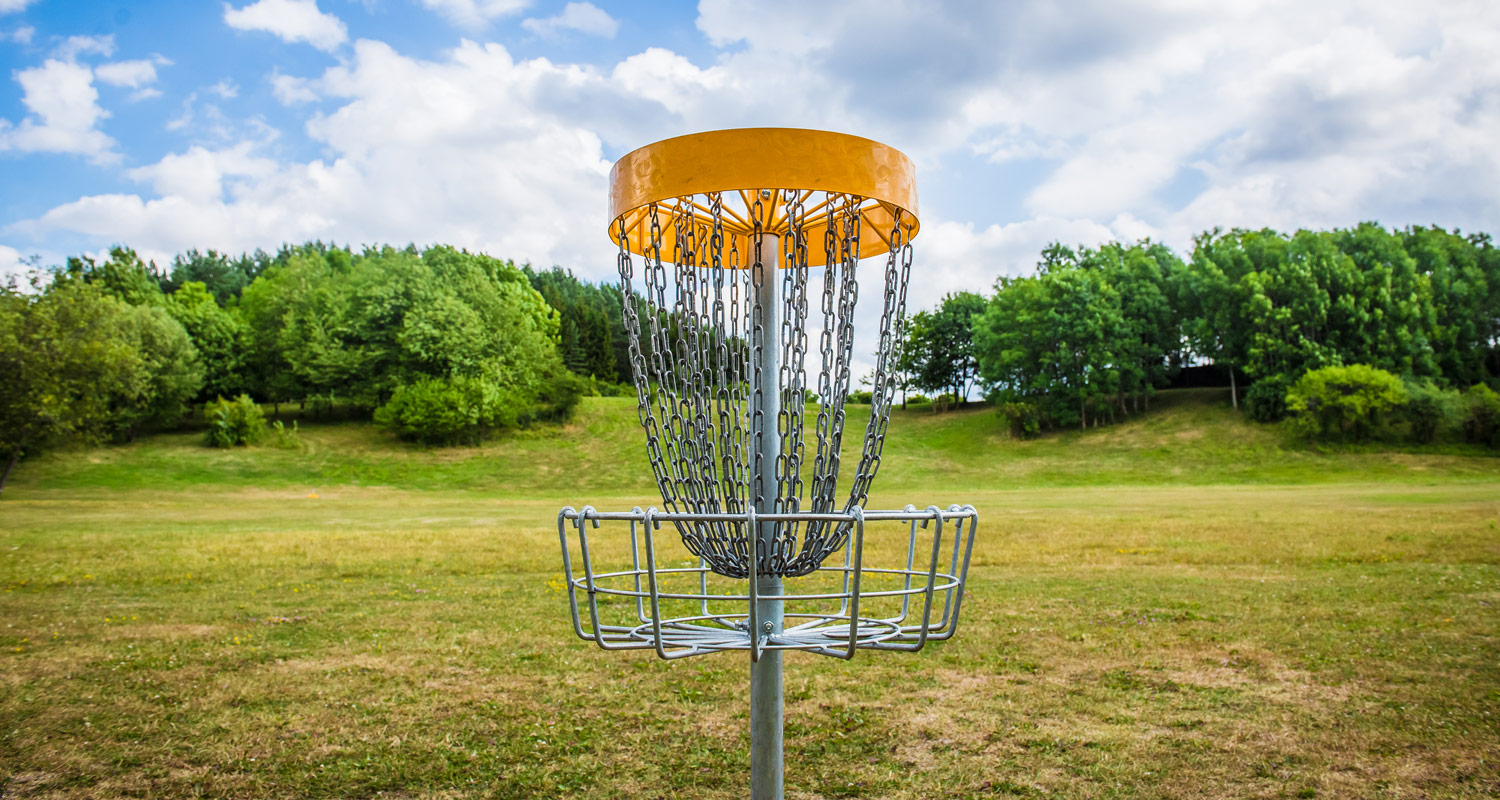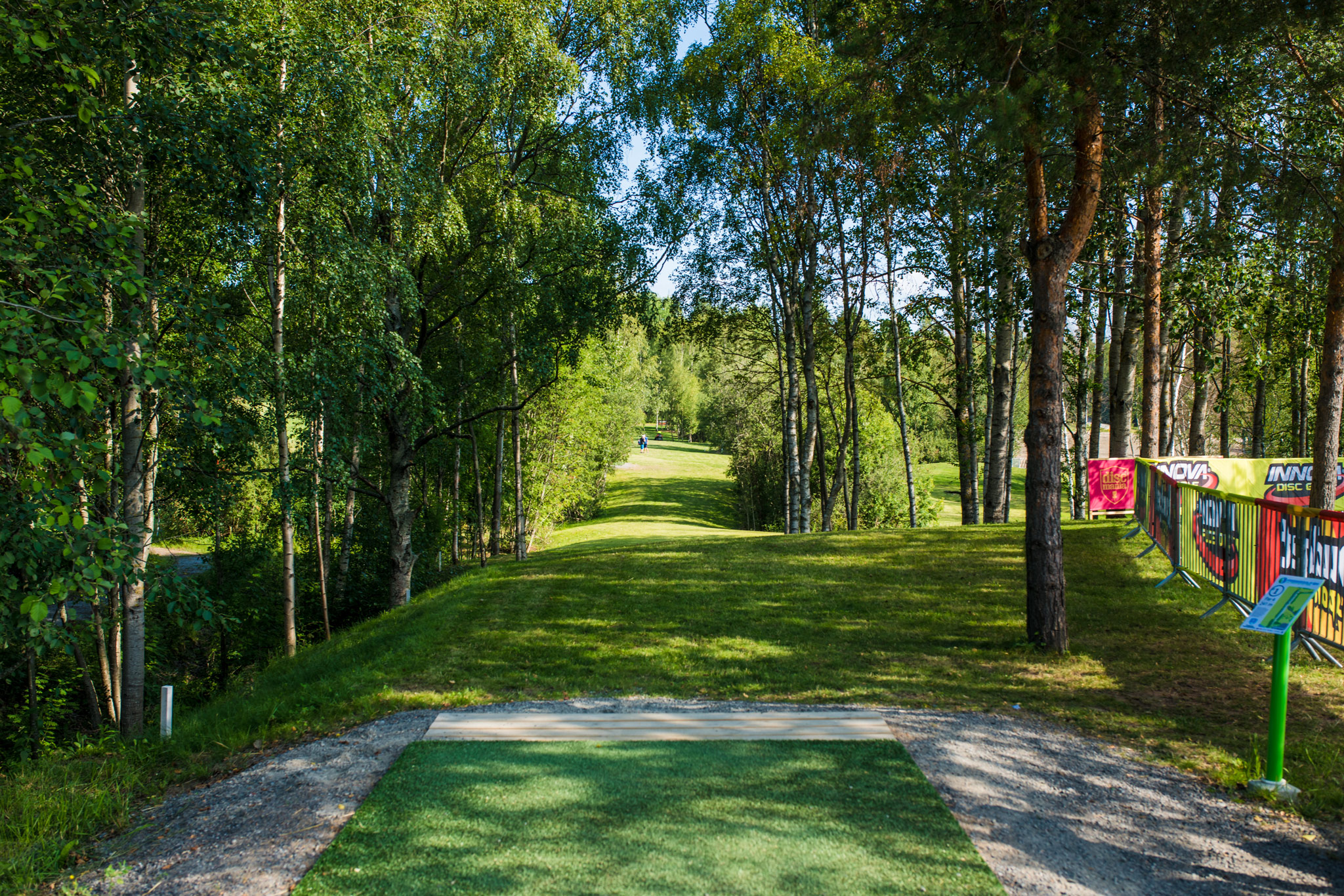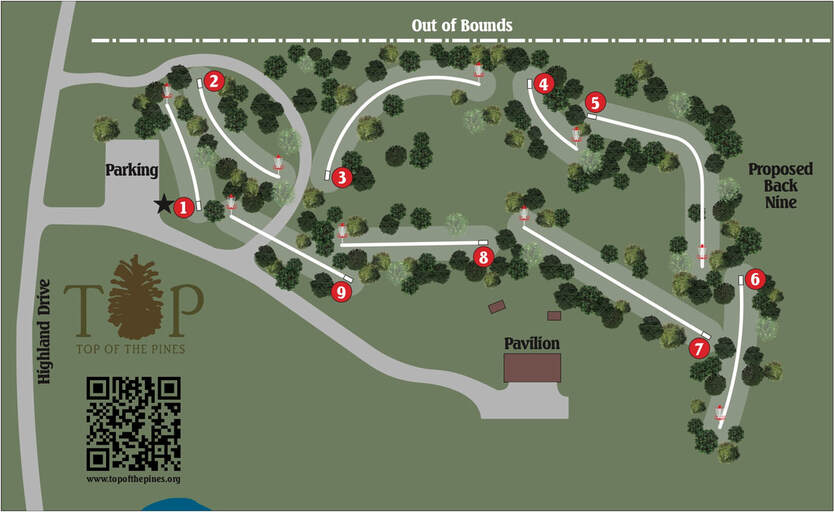To set up a frisbee golf course, designate 9 or 18 target areas and chart a course layout. Ensure each hole varies in difficulty and terrain to challenge players.
Frisbee golf, also known as disc golf, is an outdoor sport that blends frisbee and golf elements, enjoyed by players of all ages. Establishing a frisbee golf course requires strategic planning and a blend of creative and technical thinking. A well-designed course takes advantage of the natural landscape, offers a range of obstacles, and caters to both beginners and experienced players.
Creating a course involves determining the starting point, mapping out the fairways, and setting up baskets or poles as targets. With a mix of open fields, wooded areas, and elevation changes, you can design a course that is both fun and challenging. Thinking like a player and an architect, your goal is to create a course that will be engaging and enjoyable.

Credit: www.innovadiscs.com
Contents
Introduction To Frisbee Golf
Imagine a sport where the calm of a golf course meets the thrill of a frisbee toss. Welcome to the world of Frisbee Golf, also known as Disc Golf. It’s a fun, engaging, and accessible outdoor activity. Players of all ages throw a frisbee from a tee area to a target, often a basket. The goal is simple: complete the course with the fewest throws possible. Eager to start? Let’s tee off into the history and growth of Frisbee Golf.
Origins Of The Sport
The roots of Frisbee Golf are as whimsical as the sport itself. In the early 1900s, people began tossing pie tins for fun. By the mid-20th century, the frisbee was born. The first recorded game of Frisbee Golf took place in 1965 using Frisbees and trash cans as targets. The simple pleasure of frisbee tossing was evolving into a structured sport.
Rise In Popularity
What began as casual play has become a global phenomenon. Frisbee Golf has soared in popularity, particularly in the last two decades. Courses have spread across the world, offering creative layouts and challenging landscapes. With organizations like the Professional Disc Golf Association, the sport boasts organized competitions and a growing community of enthusiasts. Today, it’s a sport celebrated for its mix of skill, social interaction, and outdoor enjoyment.

Credit: www.discgolfpark.com
Essentials Of Frisbee Golf Course Design
Designing a Frisbee golf course brings the joy of disc sports to life. Each course offers a unique experience. Careful planning ensures fun and challenge for all skill levels. Let’s explore the basics of creating a course that will delight players time and time again.
Understanding The Course Layout
A great layout is key for a memorable Frisbee golf course. Think of the flow from one hole to the next. A variety of distances and pathways provide diverse challenges. Aim to balance the layout for both beginners and experienced players.
- Start and End Points: These should be near facilities and parking.
- Directional Signs: Help players navigate between holes.
- Hole Variety: Mix short, medium, and long holes for variety.
- Natural Obstacles: Use trees, water, and elevation changes.
Key Course Features
Certain features distinguish an ordinary course from an exciting one. Focus on the features below to elevate your course design.
| Feature | Description |
|---|---|
| Tee Pads | Flat surfaces for players to start each hole. |
| Baskets | Metal chains and baskets to catch the discs. |
| Signage | Information about each hole, distances, and par. |
Safety Considerations
Safety first! Ensuring player safety is crucial in course design.
- Clear walking paths to prevent trips and falls.
- Ample space around baskets to avoid collisions.
- Mindful placement of holes away from busy areas.
- Warning signs for bystanders and non-players.
Remember, a safe course is an enjoyable course. Use these tips to design a course that everyone can enjoy without worry.
Selecting The Right Location
Selecting the Right Location for your frisbee golf course is crucial. The right spot makes the game fun and safe. Let’s dig into what makes a good location.
Assessing The Terrain
Firstly, inspect the land’s layout. Look for a mix of flat areas and hills. This variety adds challenge and excitement to the game. Note these terrain features:
- Open fields for long drives
- Wooded areas for technical shots
- Elevation changes to test players’ skills
Ensure the space is large enough for 9 to 18 holes. Each hole typically needs 200-500 feet.
Community Accessibility
Think about players getting to your course. Pick a location easy to find and reach. Areas close to parks, schools, and parking spaces are ideal. Consider these points:
- Is the course near public transport?
- Can players walk or bike there easily?
- Is there enough parking for visitors?
Good access makes your course popular and visited often.
Legal And Environmental Factors
Last, check legal and environmental rules. Speak to local authorities to get permission to use the land. Ensure you don’t harm nature. Stick to these steps:
- Avoid protected wildlife areas.
- Don’t cut down trees without consent.
- Plan around existing ecosystems.
Respecting nature ensures everyone enjoys the course for years to come.

Credit: www.topofthepines.org
Equipment And Materials Needed
Setting up your own frisbee golf course is exciting. Knowing the right equipment and materials ensures the best play possible. With various types of frisbees, course features, and essential extras like scorecards, a successful setup lies ahead. Let’s get started on what you’ll need.
Types Of Frisbees
Firstly, there are different frisbees for various throws. You’ll need these primary types:
- Driver Frisbees – for long-distance throws, sharper edges.
- Mid-Range Frisbees – versatile, work well for different shots.
- Putter Frisbees – for short distances, thicker edges.
Course Infrastructure
Your course’s backbone comprises these elements:
- Tee Pads – launch points for each hole, stable and level.
- Targets – durable baskets, must be visible from a distance.
- Bench & Trash Cans – for rest and litter, maintain cleanliness.
Consider placement for variety and challenge. Add obstacles for advanced play.
Signs And Scorecards
Clear navigation is crucial for an excellent course:
- Course Map – display at the starting point, shows layout.
- Tee Signs – mark each hole, include distance and par.
- Directional Signs – help players move between holes smoothly.
Include scorecards to track performance. Make sure they are simple and readable.
With the right equipment and materials, your frisbee golf course will be a hit. Gather these essentials and watch your course come to life!
Setting Up Your Course
Launching a Frisbee golf course becomes a breeze with good planning. Prepare for an adventure in course design, where precision meets creativity. Embrace the opportunity to shape a unique frisbee golf experience. Get ready for a clear guide on crafting your course from scratch.
Step-by-step Installation
- Select the space: Look for varied terrain that can host all hole types.
- Design the layout: Map out fairways, tee-off points, and baskets.
- Choose your targets: Buy professional baskets or create simple markers.
- Install the baskets: Secure them into the ground at each hole’s end.
- Mark the tees: Use signs, stones, or concrete slabs to indicate launch areas.
- Set rules and signs: Display clear instructions for players at each hole.
Customizing Course Difficulty
| Feature | Beginner | Intermediate | Advanced |
|---|---|---|---|
| Distance | Short | Medium | Long |
| Obstacles | Few | Some | Many |
| Elevation | Flat | Varying | Challenging |
Maintenance Best Practices
- Regular checks: Inspect baskets, signage, and tee areas often.
- Trash management: Install bins and encourage clean play.
- Lawn care: Mow fairways and keep foliage in check.
- Update signage: Keep course maps and rules visible and legible.
- Seasonal tasks: Address weather-related wear like snow or foliage.
Promoting Your Frisbee Golf Course
Stepping into the world of Frisbee golf means more than just setting up a course; it’s about creating buzz and gathering players. Marketing efforts can turn a simple course into a local hotspot for sport and fun. Get the word out and watch as your Frisbee golf course becomes the new go-to destination with these promotional tips.
Marketing Strategies
Smart marketing brings players to your course. Here’s how to do it:
- Social Media: Create accounts on popular platforms. Post regular updates, photos, and event news.
- Local Partnerships: Team up with local businesses. Offer them advertising in exchange for their support.
- SEO: Optimize your website. Use keywords like “Frisbee golf” and “local sports.”
- Flyers and Posters: Design eye-catching materials. Place them in community centers, gyms, and coffee shops.
Hosting Tournaments And Events
Tournaments fuel excitement. They draw crowds. Here’s how to host successful ones:
- Plan: Choose a date. Make a schedule. Think about player categories.
- Advertise: Use social media. Send press releases to local news outlets.
- Engage: Offer prizes. Get local sponsors. Make the event memorable.
- Create an Experience: Include food vendors. Play music. Add side games.
Building A Community Of Players
Community is key to keeping a course alive. Follow these steps to build one:
- Regular Meet-Ups: Schedule weekly games. This nurtures a regular playing habit.
- Training Clinics: Offer lessons for beginners. Invite pros to teach advanced techniques.
- Online Groups: Create a Facebook group or forum. Players can discuss games, share tips, and coordinate meet-ups.
- Feedback Loop: Listen to your players. Implement their suggestions to improve their experience.
Frequently Asked Questions On How To Set Up A Frisbee Golf Course
How Do You Layout A Disc Golf Course?
To layout a disc golf course, scout for diverse terrain and ample space. Design a mix of hole lengths, ensuring clear fairways and challenging obstacles. Incorporate natural features for variety. Space tees and baskets strategically for flow and safety. Consult local regulations for compliance and environmental consideration.
How Many Acres Do You Need For Disc Golf Course?
A standard 18-hole disc golf course requires 30 to 40 acres of land. A smaller 9-hole course can fit on 15 to 20 acres.
Can A Disc Golf Course Be Profitable?
Yes, a disc golf course can be profitable by charging players for access, hosting tournaments, selling merchandise, and offering lessons. Effective management and location are crucial for success.
How Many Holes Does A Frisbee Golf Course Have?
A standard Frisbee golf course typically features 18 holes, but smaller courses with 9 holes are also common.
Conclusion
Setting up your frisbee golf course should be a breeze now, armed with these tips. Remember, customization is key for an engaging game. Unleash your creativity, keep the layout challenging yet fun, and you’ll be the go-to host for frisbee golf in no time.
Happy throwing!